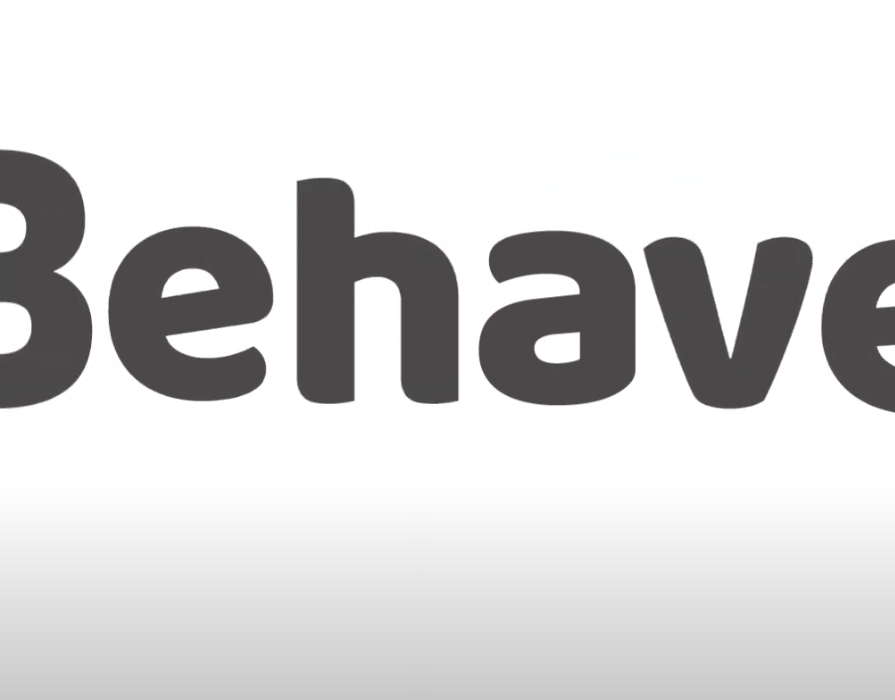View of Stadium Environment
Project Overview
Historic Virtual Reality (VR) experiences provide an opportunity for participants to re-visit historic periods and rel-live moments that helped transform society and the world around us. In virtual museums, participants can interact with historic artifacts in a way that is often prohibited within real museums, creating a richer sense of immersion and presence.
Over the course of 14 weeks, I worked with two other visual communication design students to create "Going for the Gold". "Going for the Gold" is an interactive first-person virtual reality experience that puts you in the environment of the first modern Olympic Games held in Athens, Greece in 1896. This VR experience is designed for educational and recreational purposes. For the current phase of the project, users are able to walk around and explore the stadium, stop and read the plaques, pick up important objects, and learn about the first modern Olympics while experiencing the sounds and environment of that period. Some unique selling points of this VR experience are that it is one of the first Olympic Sport Gameplays in VR, it displays the history of the Olympics, gives insight into Greek history and culture, it is friendly to all age groups, users can control their own pace, and individuals get to experience the excitement of the crowds and competition of the first modern-day Olympics.
If this project is to be developed further in the future, we would prefer users to actually be participants in the Olympic sporting events, talk to athletes, and even compete at various levels in sports, however at this moment there is no level-up in our game. We hope that in the future, users will be able to experience all of the different cultures represented at the games and reflect on how humans are more alike than we think. The goal of this project is to create a virtual reality embodied experience that allows users to go back in time, to a place they've never been, and experience what they have only read about in history books. We want to allow users to redefine their view on history, experience a revolutionary event, and make learning immersive.
Frontal View of Stadium
Designers & Roles:
Kayla Eastman, OSU VCD Class of 2024: environment design, character design, audio lead
Brianna Gallagher, OSU VCD Class of 2024: environment design, UX/UI, scheduling
Jacob Allen, OSU VCD Class of 2024: interaction design, documentation, research lead
Narrative Design
In the initial stages of the project, we worked to understand the direction of the user journey as well as how the users would interact. Before beginning the narrative design, we had to collect research on every aspect of the 1896 Olympics. From April 6-15, 1896, there were 280 male athletes from 12 countries competing in 43 events which included cycling, swimming, gymnastics, wrestling, shooting, tennis, and the first marathon. There was a festive atmosphere where foreigners were greeted with parades and banquets. This helped us envision the journey we wanted our users to take and what key components were necessary to make it educational and interactive. Our goal was to create a journey for users that would allow them to experience every part of the games. We focused on the Olympic Museum stage of the journey map which would allow users to walk around and get familiar with the environment and engage with signs presented with historical facts. Our opportunities included creating an authentic and realistic recreation of the true arena, engaging the users, and providing intuitive paths to navigate through. In the future, the next steps of the narrative design that would need to be completed are the main menu for sports play, recreational sports play, and tutorials, as well as conversations with other athletes. The framework we created was crucial and was a guide for finding the sound, intensity of color and lighting, details of the environment, and locomotion.
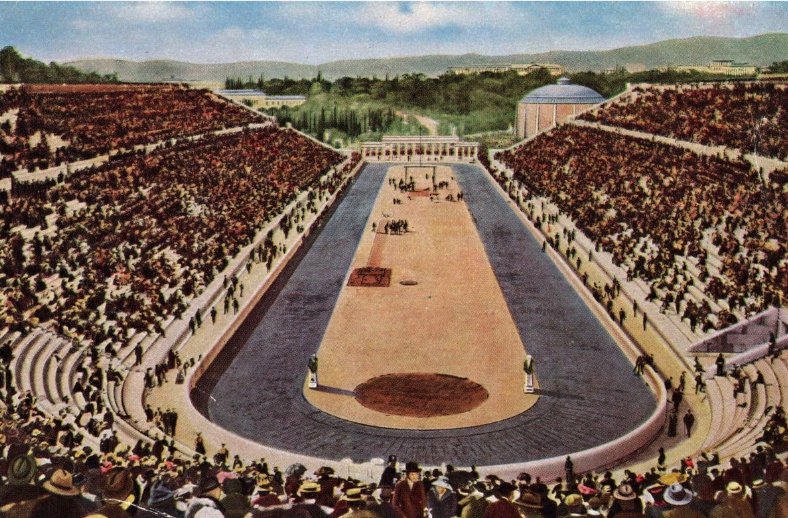
Stadium Reference Image 1

Stadium Reference Image 2

Stadium Reference Image 3
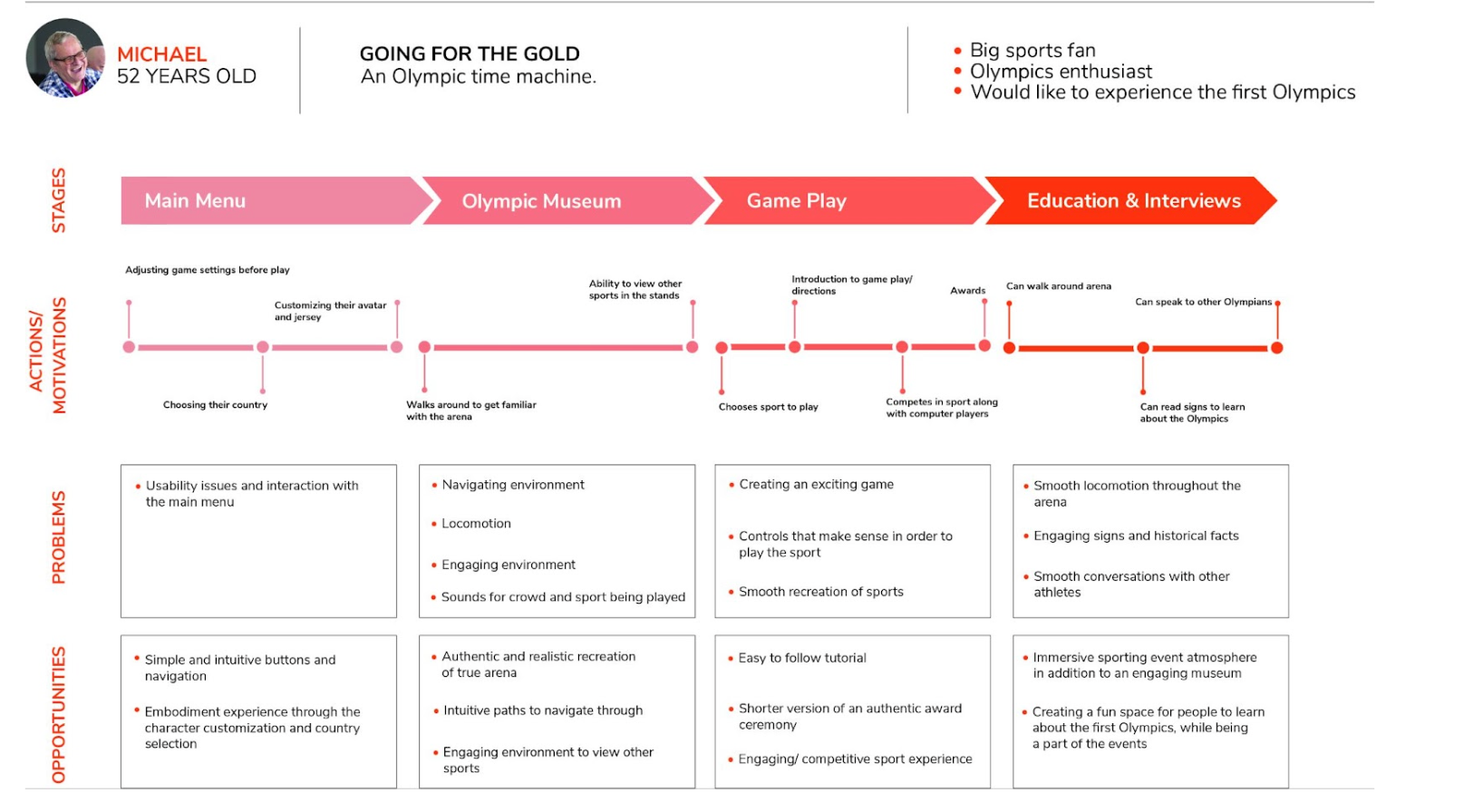
Journey Map
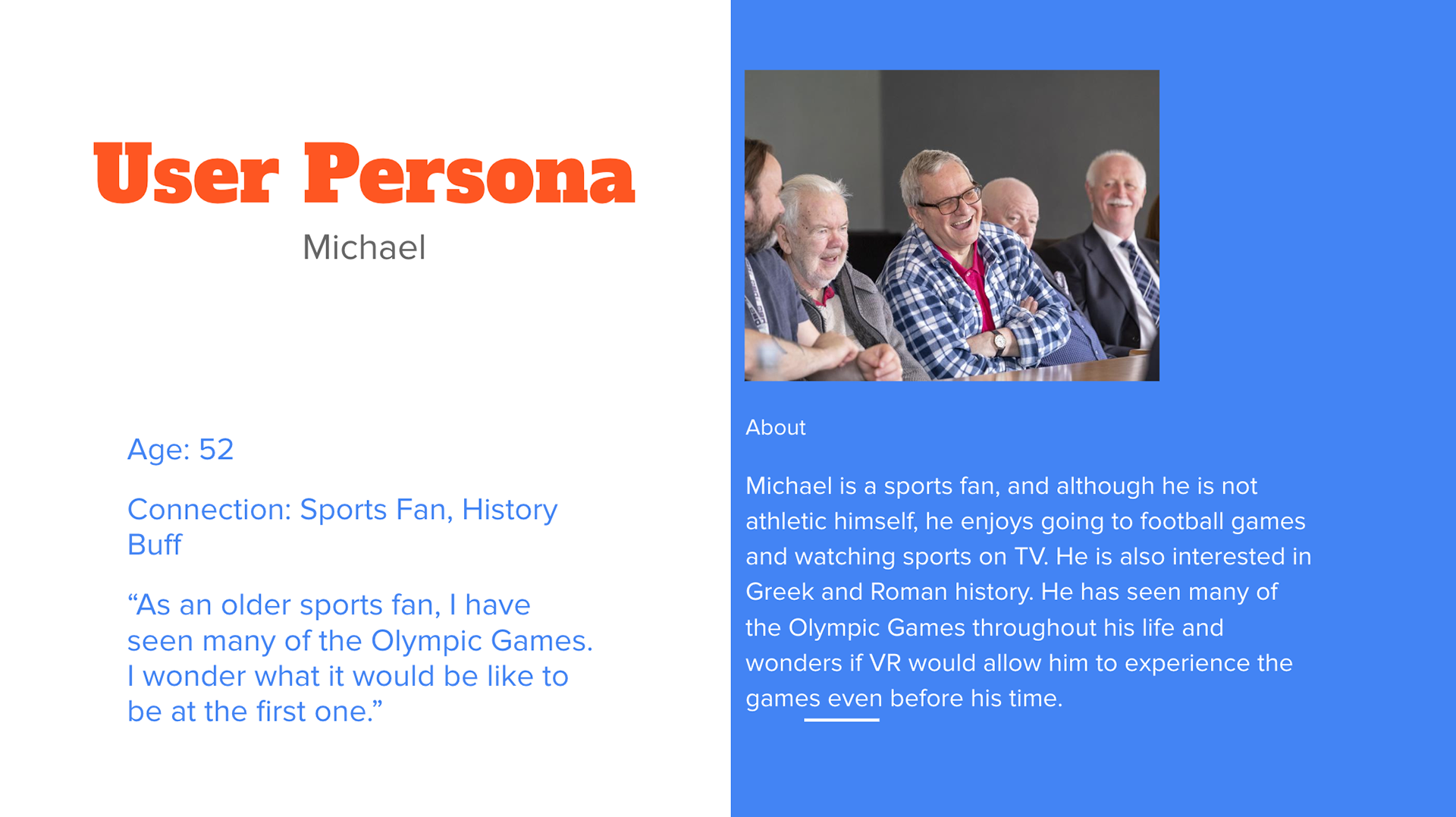
User Persona 1

User Persona 2
UX/UI
When developing the UI/UX of the project, we had to consider what it meant to work within the space of virtual reality. The gameplay length is flexible and the game comfort level is comfortable when walking around the museum and stadium. One thing that we had to consider when creating an experience was we needed to keep it as simple as possible. Many first-time VR users get motion sickness and get easily overwhelmed with sound, so accessibility is extremely important. For locomotion, we made players stationary and they are able to move around using joysticks. All of our signs have easy-to-read text. With a simplified interactive experience accompanied by powerful visuals and sounds, the user is able to focus on the journey and the educational content. With potential future adaptations, it will be important to provide various accessibility features such as captions when talking with athletes' voice audio with the plaques, and tutorial stages for sports play.
Welcome Sign with Directions
Environment Design
The environment was my main contribution to the project. Before creating the environment, I had to first collect a lot of visual data from the time period of the Panathenaic Stadium. This stadium was originally built in 330 BCE but was restored in marble just before the first modern Olympics. Photography was still a relatively new medium and the only pictures of the 1896 stadium were in black and white. Drawings were available to display color however each was slightly variable. I looked at all of the images and pictures and found overlapping commonalities to work with. This was my first time ever using Maya and Unity as well, so it was a unique learning experience. We had some workshops about Unity in class, however, there were none on Maya and therefore I had to seek help outside of the classroom. I watched many tutorials and met multiple times with the TA, for a total of 21 hours outside studio time, to create a replica of the stadium. Other items such as foliage, tables, and most of the historical objects, I was luckily able to find most of them on the Unity Asset Store. Textures were mostly created in Adobe Illustrator and Photoshop. One of the major challenges with creating the virtual environment was scale. In order to make the experience feel as real as possible, I had to test the scale through the Oculus Quest 2 Headset at each step of the way.

Bird's Eye View
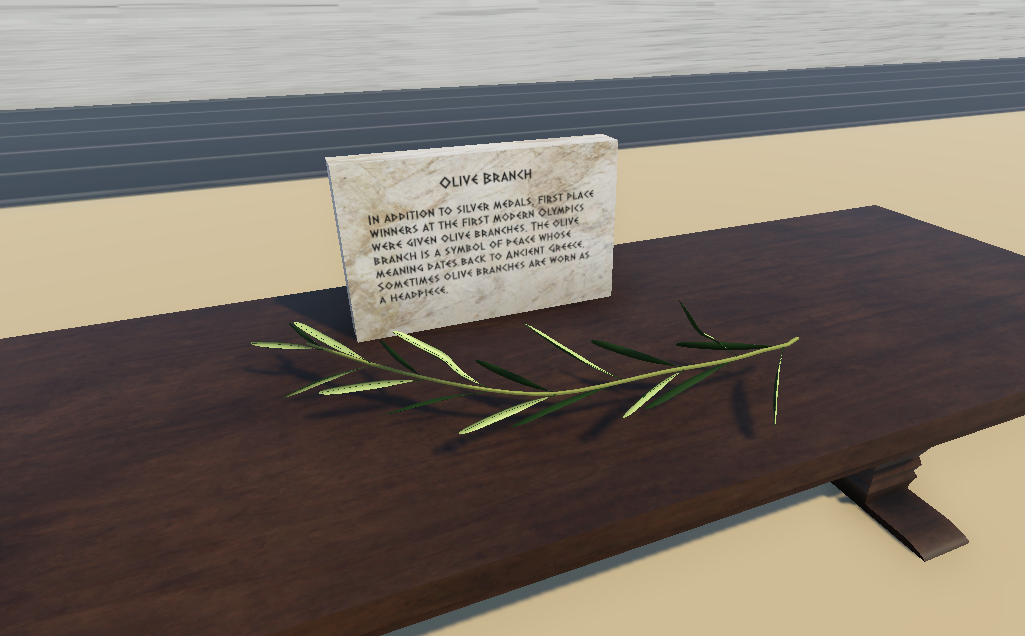
Plaque and Olive Branch Asset
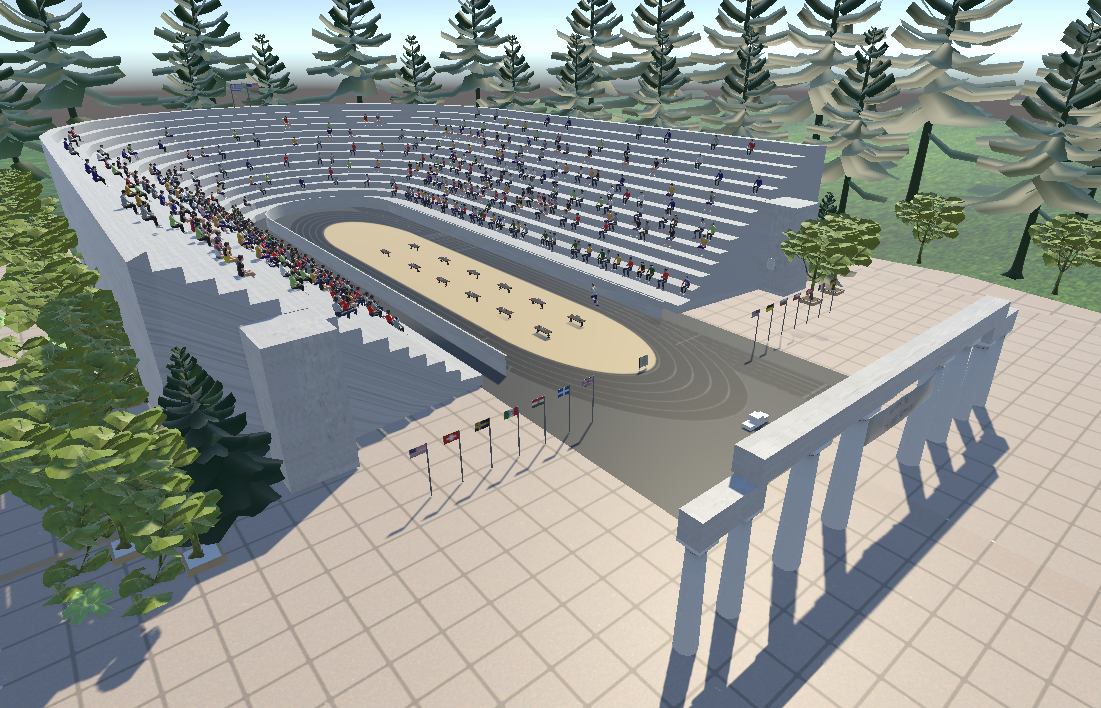
Left Side View
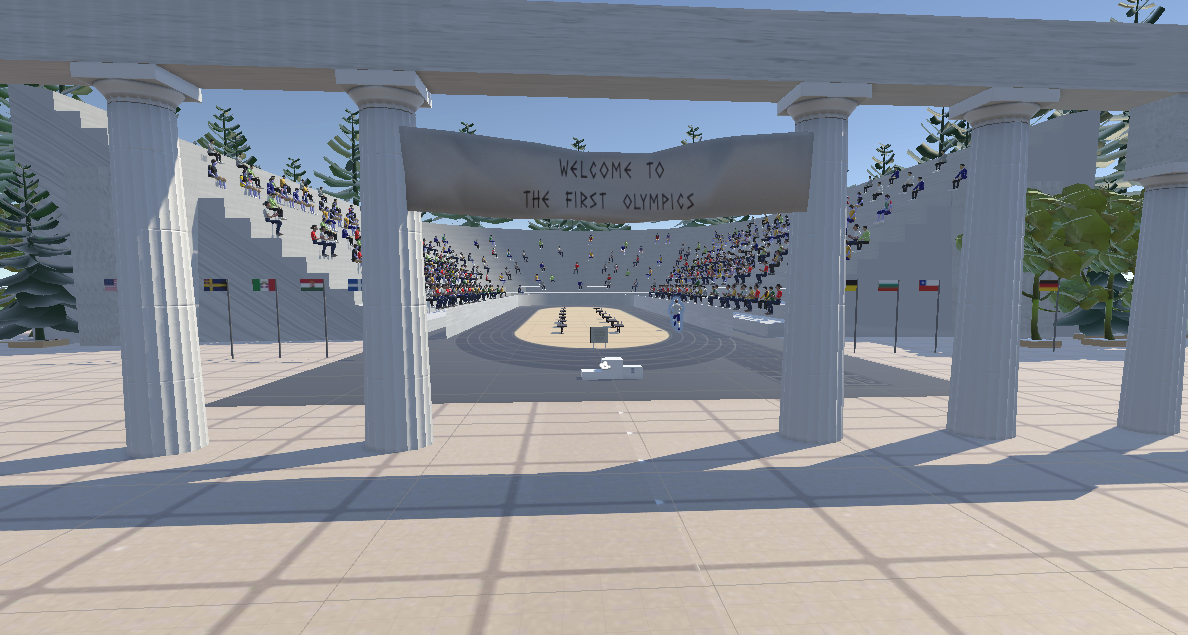
Frontal View

Olympic Schedule
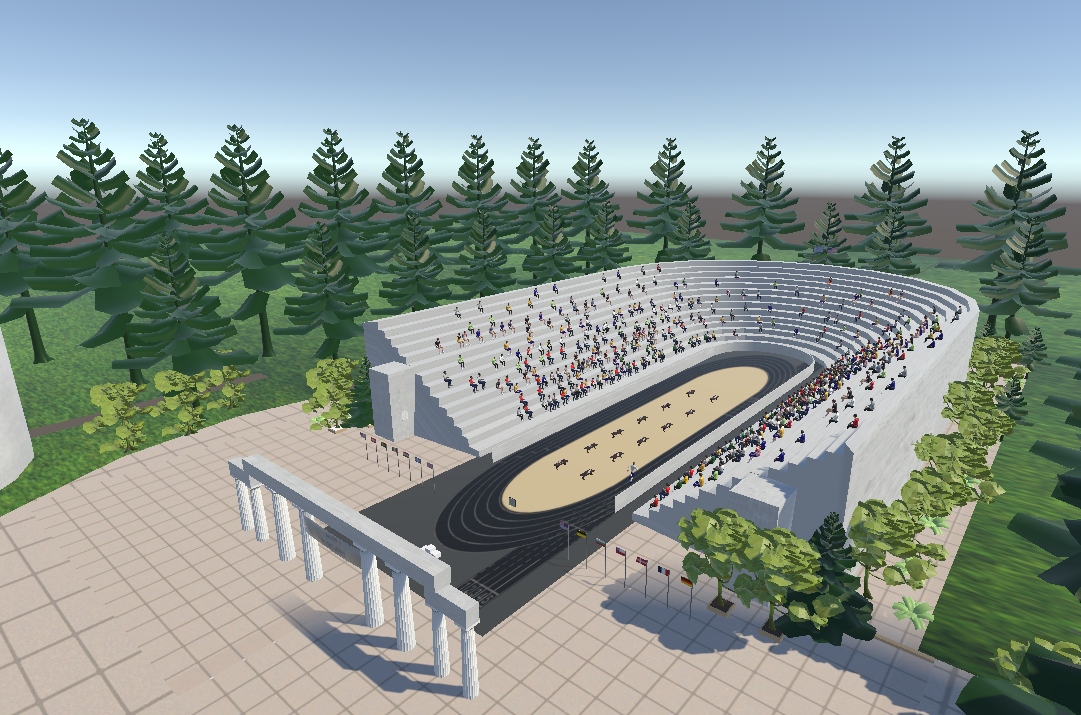
Right Side View
Character & Sound Design
Character design was extremely important in the making of our VR experience. To make the user feel like they are in an Olympic stadium, it was essential to include dozens of fans and an athlete. We imported our characters from Mixamo and then animated them in Unity. This process took a while to understand because each new adjustment required a different set of steps. It reminded us of using After Effects with the animation keyframes, however, it was more difficult because we couldn’t just animate the runner himself, we had to animate a cube that we attached to the runner. Visual variety was extremely important as well when adding the characters in. Overall, it became clear that simply adding characters adds an even deeper level of immersion to the overall game.
The sound design brought this experience to life and was the second key element that was critical for making this experience immersive for the user. Audios of crowds cheering are layered with applause sounds and sounds of large groups talking in order to create a complex sound that replicated that of a sports arena.
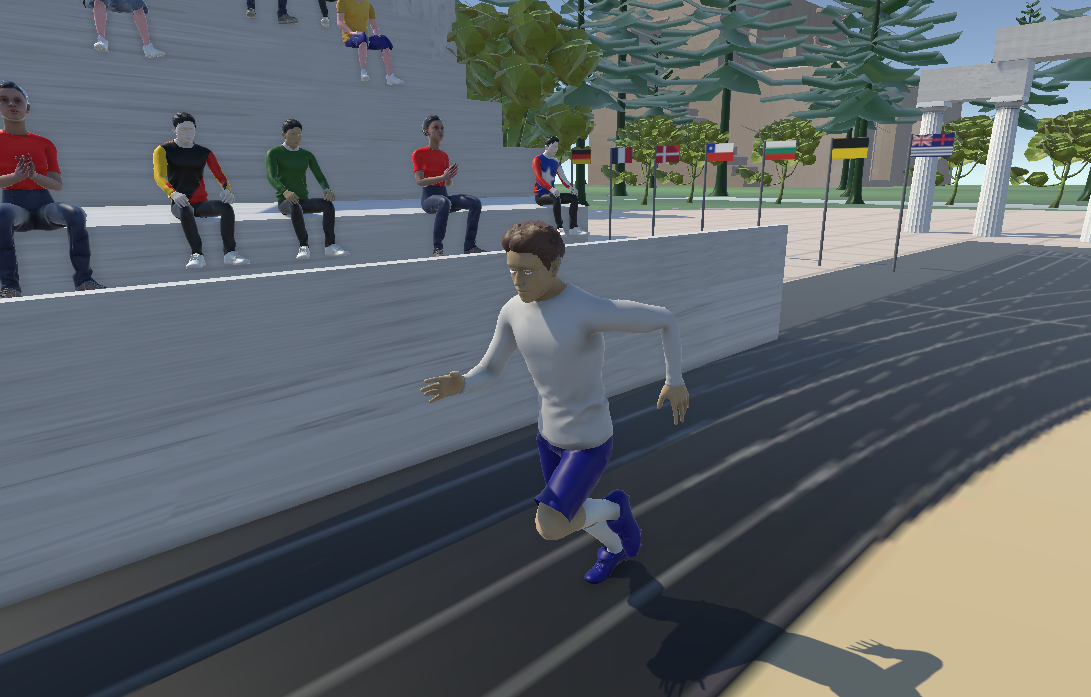
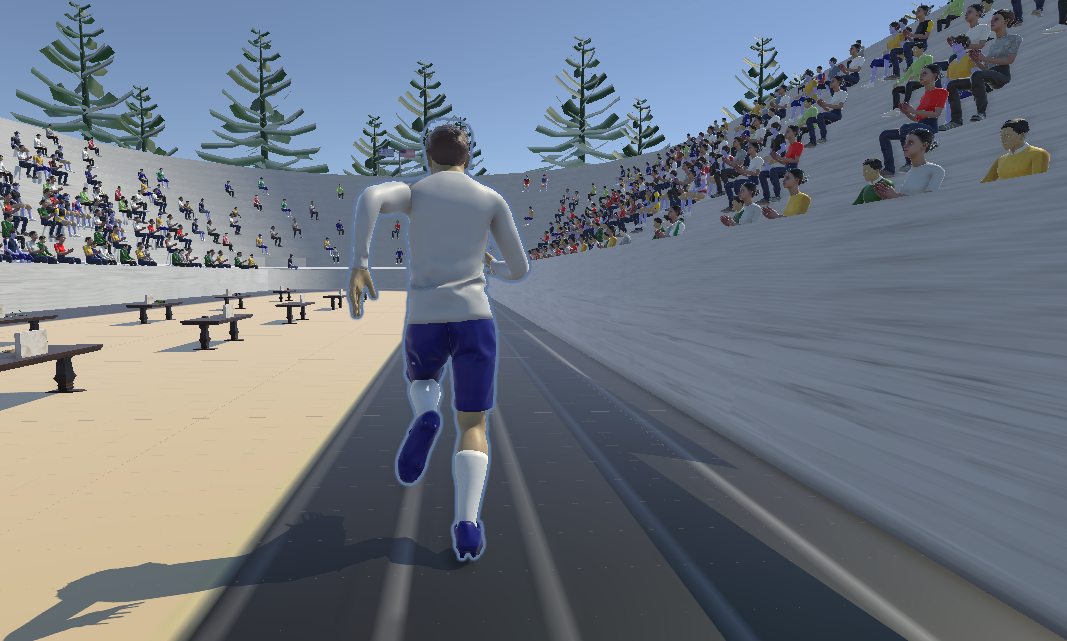
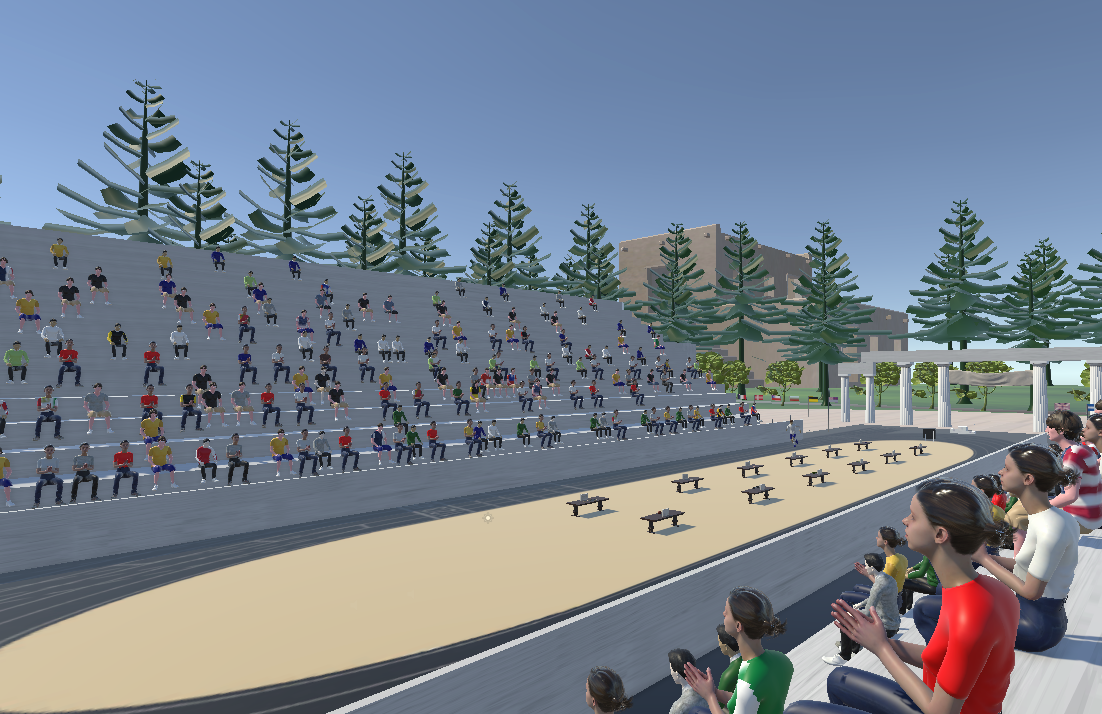
Final Deliverable
This is a video of the final VR experience. Overall this project was a huge learning experience and challenged me to grow in so many different ways. I learned how to create 3D models in Unity and Maya, how to code and trigger sounds and animations, and how to add components to Unity game objects to make them grabbable. Even though there is so much more room for improvement and many ways to develop further, I am proud of my first VR experience. I was able to learn extremely complex software in only four months and deliver an interactive virtual experience.


